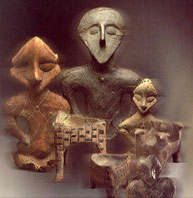0

















| Thumbs Up |
| Received: 29 Given: 21 |

Arbanasi
Arbanasi (Albanian: Arbėreshėt e Zarės, local dialect: Arbneshė), also known as the Arbėreshė of Zara, are a population in Croatia of Albanian origin, who speak a local dialect of Gheg Albanian.[1] Their name means Albanians in Croatian and is the toponymy of the first Arbanasi settlement in the region, which today is a suburb of Zadar.
Distribution
Today, the community is spread across Croatia. Their original settlements were Arbanasi of Zadar and some villages around Zadar, namely Zemunik, Dračevac, Crno, Ploča, etc.[2] The inhabitants of this one time village were known as the Arbanasi (or simply, the "Albanians" in Croatian). The Arbanasi are known to have settled the area during two different periods of migration; the first in 1655 and the second in 1726-33. These settlers were said to be part of the Kastrioti clan, one of the numerous Northern Albanian clans known to have existed.
....















| Thumbs Up |
| Received: 29 Given: 21 |

History
The origin of this population is thought to be from Shkodra lake region in Northwestern Albania and Southeastern Montenegro. According to scholars they are descendants of immigrants from villages in Bar region of Montenegro primarely and from Briska and Livar. Arbanasi have migrated in two different periods, during the mid 17th and 18th century.
The first group of Arbanasi group of Albanians that migrated to Croatia includes a community that settled near Pula, Istria in 1655. All these groups would be integrated into the social and economic Venetian-Dalmatian, but they preserved their language and their customs, and songs. First, the Albanian community worked to reclaim the marshy areas near the Arbanas, which was originally an island and that in time it was connected to the mainland, and then got to make the land cultivable land in the scheme of 'lease. The Venetian government took charge of construction of many homes and, at first, even meals.
Since 1901 the Arbanasi was also equipped with an Albanian school and in 1910 James Vuēani promoted and organized the "Italo-Albanian Association".
According to tradition, the Albanians of Arbanasi came from countries Briska and Sestan. These locations were identified by some with the villages of Shestan, Brisk, and Arbnesh Liar, all located in the hinterland of Bar and Ulqin in Montenegro, but within areas inhabited by Albanians. A demonstration of the fact that the origin of the Albanians of Arbanasi were not located along the coast is that in their language most of the names of the fish comes from the Croatian.
After the Second World War, many Arbanasi emigrated to Italy, following the Yugoslav takeover of Zadar. In modern times about 4000 Arbanasi remain in Croatia
Last edited by Adrian; 02-09-2012 at 11:59 AM.
















| Thumbs Up |
| Received: 1,371 Given: 558 |

so quoting Wiki article is somehow a thread worthy?
At least you guessed a section.
he is Arbanas
















| Thumbs Up |
| Received: 29 Given: 21 |

Notable Arbanasi/Arbėresh
Andrea Aleksi
Andrea Nikollė Aleksi (1425–1505), also known as Andrea Alessi or Andrija Aleši, was an Albanian architect, painter and sculptor and considered one of the most prestigious artists of the Dalmatian Renaissance period.
He moved to Split in Dalmatia during the Republic of Venice, where he studied under sculptor Mark Troja. He lived most of his life and conducted much of his work in Dalmatia. Aleksi was a disciple of Giorgio da Sebenico and his best known work is with Nikola Firentinac on the expansion of the chapel of Blessed John of Trogir in 1468. Just like Cathedral of St. James in Šibenik, it was composed out of large stone blocks with extreme precision. It is unique harmony of architecture and sculpture according to antique ideals. From inside, there is no flat wall. In the middle of chapel, on the altar, lays the sarcophagus of blessed John of Trogir. Surrounding are reliefs of puttos carrying torches that look like they were peeping out of doors of Underworld. Above them there are niches with sculptures of Christ and apostles (the principle work of Aleksi), amongst them are putties, circular windows encircled with fruit garland, and a relief of Nativity. All is ceiled with coffered ceiling with image of God in the middle and 96 portrait heads of angels. With so many faces of smiling children the chapel looks very cheerful and there isn’t nothing similar in European art of that time.
Andrea is best known for his merchant statues in Ancona, Italy, and his 1454 mural paintings in a church on Arabe island of Dalmatia particularly The Baptistry of Trogir". He signed the Trogir Baptistery in 1467 with: ANDREAS ALEXIUS DURRACHINUS OPIFEX MCCCCXII (Andreas Alexius, artisan from Durrės, 1462).
He died in Durrės in 1505.















| Thumbs Up |
| Received: 29 Given: 21 |

Tomislav Ivčić
Tomislav Ivčić (January 6, 1953 – March 4, 1993) was a Croatian singer, songwriter and politician. He died in a car accident and is buried in Zagreb at the Mirogoj Cemetery.
A native of Zadar, Tomislav Ivčić became one of the most popular singers and songwriters during his appearances on 1970s pop music festivals. His specialty was pop music inspired by Dalmatian folklore. Ivčić also wrote and performed "Večeras je naša fešta", a song that would become a semi-official anthem of Dalmatia, often sung and performed whenever a Dalmatian athlete or sports team won a title or important game. He has written over two hundred songs and released twenty three albums during his career.
During the war in Croatia, Ivčić wrote the song "Stop the War in Croatia" which became a hit. It even charted in the Top 10 in Australia in 1991. In 1990, Ivčić also became a member of Croatian Democratic Union. He expressed his patriotism through the song "Bože čuvaj Hrvatsku", that would become semi-official anthem of his party. In February 1993 he ran as his party's candidate for House of Chambers of Croatian Parliament, and won a seat. A few weeks before he was supposed to take office and shortly after a Globus interview in which he was described as "first Croatian senator", his automobile was involved in traffic accident that would claim his and lives of three more people.
His older half-brother Đani Maršan is also an accomplished singer and songwriter, and his other older brother Vedran Ivčić, was, to a lesser degree, as well.
















| Thumbs Up |
| Received: 29 Given: 21 |

Božidar Kalmeta - Minister of the Sea, Transport and Infrastructure
Božidar Kalmeta (pronounced [bǒʒidar kālmeta]) (born in Zadar, January 15, 1958) is a Croatian politician. He served from 2003 to 2008 as the Minister of the Sea, Tourism, Transport and Development and from 2008 to 2011 as the Minister of the Sea, Transport and Infrastructure and in the Croatian Government.
He graduated in 1982 from the University of Zagreb's Faculty of Agronomy.
From 1982 to 1993 he worked in his hometown Zadar as a manager at the Maraska distilling company (which produces the world famous Maraschino liqueur).
In 1989 he joined the Croatian Democratic Union (HDZ) and in 1993 his full-time political career started after he was elected to the Zadar City Council. In 1994 he became Zadar's deputy mayor, and from 1994 to 2003 he served as mayor of the city.
From 1995 to 2003 he was also a member of the Croatian Parliament, serving as one of representatives from Zadar County. At the 7th HDZ Convention he was elected party's Vice-President, beating Ivić Pašalić, and is currently a member of the party's presidency.
After HDZ won the Croatian parliamentary elections of 2003, Kalmeta was appointed to the newly created post of Minister of the Sea, Tourism, Transport and Development (which was created by merging three separate ministries) under Prime Minister Ivo Sanader. One of the chief accomplishments credited to his ministry was the completion of the A1 Highway linking the country's two largest cities, Zagreb and Split. In the next elections of 2007 HDZ won again and Kalmeta kept his post under Ivo Sanader's second term in office.
In June 2007, Kalmeta's long time official driver, one Danijel Miočić from Zadar, was indicted for racketeering. He and three others were arrested when they took EUR 100,000 worth of bribe from a Cetingrad businessman, and the money was meant to secure work for the said person's company in public tenders run by Kalmeta's Ministry. Kalmeta stated that he had no knowledge of these acts, nor how his driver could have had any sway on the tenders. In November 2007, Miočić and six others were convicted in court. They appealed the conviction, but in October 2008/March 2009 the County court in Karlovac affirmed the conviction.
In February 2009, Kalmeta fired Davorin Kobak, the general manager of Croatian Railways, the national railway operator overseen by Kalmeta's Ministry, allegedly after a police wiretap operation uncovered a conspiracy to embezzle three million euros. In June, USKOK arrested Kobak and two others and charged them with embezzlement. In July and August, after the 2009 Rudine train derailment, Kalmeta intervened to replace several managers, and soon after, HŽ managers Ivan Medak, Drago Rogulj, Drago Ivanković were arrested for their role in causing the fatal Rudine accident, with several others.
In November 2009, Kalmeta's long-time associate the State Secretary Zdravko Livaković unexpectedly resigned and after that the Government fired much of the management of the public company Hrvatske autoceste, the largest recipient of Kalmeta's Ministry budget money. Soon afterwards, three former managers of Hrvatske autoceste, Jurica Prskalo, Mario Lovrinčević and Goran Legac, were arrested for embezzling over 21 million kuna on a public tender, together with a chief engineer Željko Kandžija and owner of a private construction company Slaven Žužul.
Kalmeta has consistently claimed he never knew about those affairs and has refused to take any kind of responsibility. President Stjepan Mesić was one of many who suggested Kalmeta needs to resign. After another railway accident on November 21 near Rijeka, the railway workers union sent an open letter of complaint to the minister. On December 11, 2009, Kalmeta underwent an interpellation and survived a vote of no confidence.
In December 2010, Kalmeta dismissed the last remaining member of the Board of Directors of Hrvatske autoceste, Josip Sapunar, after he was indicted for participating in a large-scale embezzlement scheme. The latter subsequently testified in USKOK and accused the minister of complicity.
















| Thumbs Up |
| Received: 1,371 Given: 558 |

I didnt know Ivčić was Arbanas, who is your source?















| Thumbs Up |
| Received: 29 Given: 21 |

A site created by Arbėresh of Croatia - Zadarski Arbanasi!
http://zadarski-arbanasi.blog.hr/
















| Thumbs Up |
| Received: 1,371 Given: 558 |

Most of these people already had slavic surnames, when they came.
First settlers, bolded are with common Croatian Surnames, of course written by VenetianLuca d'Andrea Gezghenovich, Nicolo di Luca Marghicevich, Nicolo d'Andrea Gasparovich, Giovanni d'Andrea Gezghenovich, Pere di Marco, Prem Vuca Marghicevich, Paolo Giech Marghicevich, Giech Prend Marghicevich, Giech Pepa Marghicevich, Marco Discialo Marghicevich, Prenz Prema Marghicevich, Petar Vuca Gianova, Nico Matessich, Luca Prend, Boso Nico Smira, Stanica Gielencovich, Visco Gielencovich, Lech Pero Marghicevich i Luca Lucich.
There are currently 1 users browsing this thread. (0 members and 1 guests)
Bookmarks